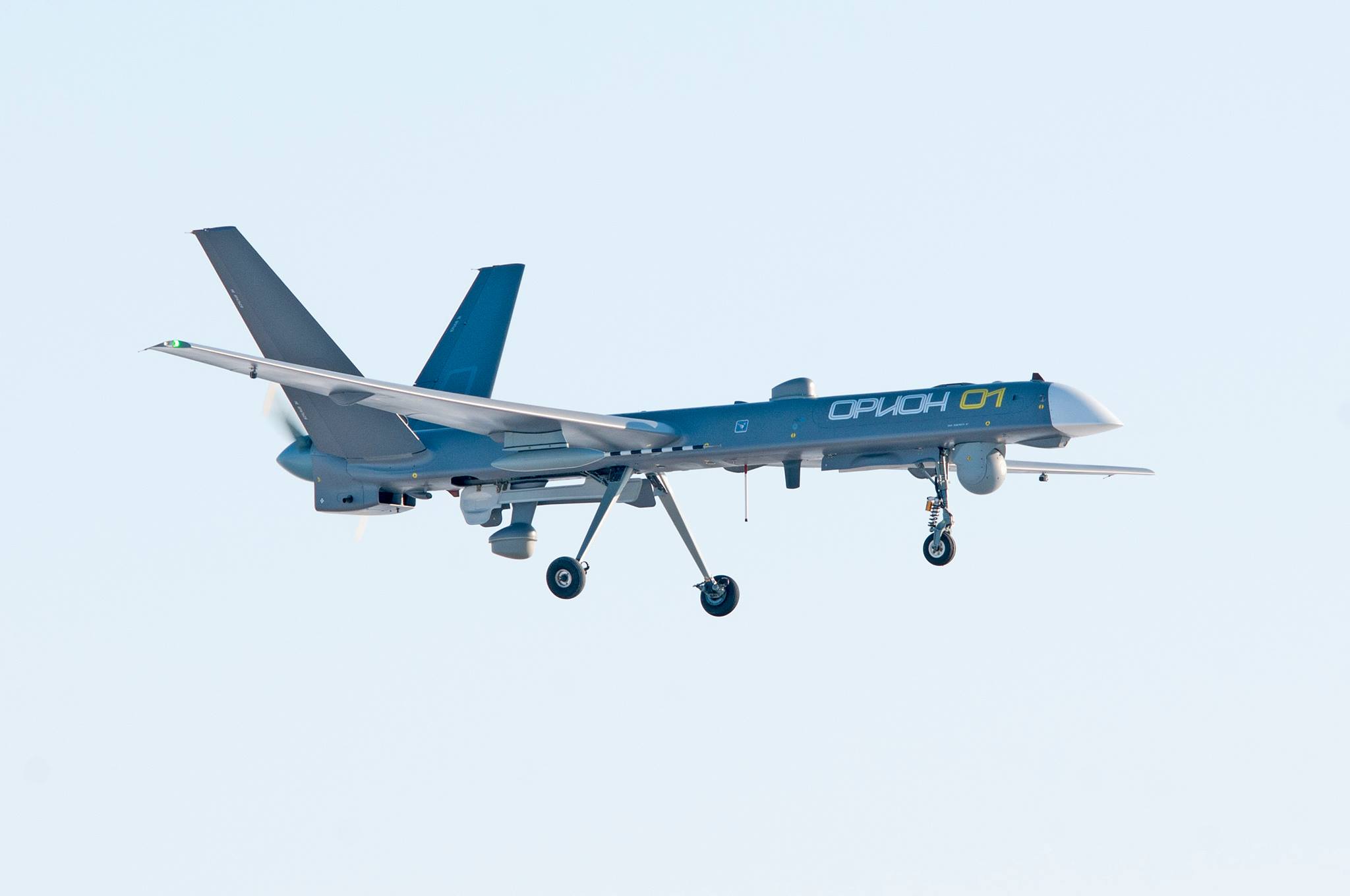Russia’s Orion unmanned aerial vehicle (UAV) has recently demonstrated fighter-like capabilities. It can now eliminate enemy drones with a new variant of an existing guided missile.
The Orion is considered one of Russia’s best strike drones. The state-owned Russia-1 TV channel previously released footage of the drone’s combat use in Syria, and the latest video shows the drone striking an unmanned helicopter.
The latest trial, according to the Russian Ministry of Defense, indicates that the Orion drone can now engage other drones in combat, as part of a larger attempt to provide new weapons capabilities to the Russian UAVs.
The tests were conducted at the Crimean training ground. The Russian Ministry of Defense released the video of the test, which was apparently originally broadcast as part of a documentary on the state-owned Russia-1 TV channel.
A Drone With Fighter-Like Capabilities?
The Orion has a turret with electro-optical and infrared cameras, as well as a laser target designator for delivering guided munitions against ground targets. The footage shows a pilot in the ground control station using the drone’s sensors to first identify the target before initiating a missile attack.

The drone may carry out visual, radar, or radio-technical reconnaissance while patrolling a specific area for an extended period of time. The Orion can operate for up to 24 hours. The drone’s arsenal includes the KAB-20 and KAB-50 adjustable aerial bombs, the UPAB-50 guided gliding aerial bomb, and the X-50 guided missile.
The export variant of the drone is called ‘Orion-E’. The range of applications of Orion-E can be expanded due to satellite communications, according to Sergey Bogatikov, the head of the Kronstadt company. It could be controlled remotely across a 250-kilometer radio channel.
https://youtu.be/wEHXdogxgwM
Earlier, the Orion program has encountered some issues, involving the Russian Ministry of Defense rejecting the first samples due to “additional criteria not initially included in the technical specification”. Moreover, at least one crash has occurred, as well as challenges in obtaining a reliable Russian-made engine.
Sergei Tyugay, deputy head of unmanned aviation within the Russian Aerospace Forces high command, previously said Orion has demonstrated itself to be “not just successful, but survivable” in Syria. But this claim sounds implausible given that American Predator and Reaper drones were also shot down in the past.
The latest video’s description states, “For the first time, the military department declares that Russian drones have fighter capabilities and can destroy enemy drones.” The Orion had previously launched air-to-ground weapons during combat testing in Syria in 2018.
However, the launch of air-to-air missiles, or dual-role weaponry capable of hitting targets both in the air and on the ground, appears that Russia is aiming to counter high-performance drones with its Orion.
Air-Launched Kornet Missile
The Orion drone, also known as Inokhodets, is seen launching a new air-launched version of the 9M113 Kornet anti-tank guided missile (ATGM) against the helicopter drone in the latest video. According to reports, the two drones flew 60 miles apart before engaging the target at a distance of 2.5 miles.
The basic Kornet ATGM is guided by laser beams. The air-launched version is said to have infrared and TV-guided modes, but it’s unclear whether these are employed for missile guidance or merely to assist the controller in detecting and tracking targets. Moreover, the procedure to detect the target is unclear.
The missile, designated Kh-BPLA, has undergone “dozens of successful tests” from the Ka-52M attack helicopter, RIA Novosti reported, which quotes an unnamed source in the military-industrial complex. The missile has a maximum range of 6.2 miles and can destroy both low-flying, low-speed aerial targets and armored vehicles.
The Drive noted that an anti-aircraft version of the Kornet already exists. The 9M133FM-3 was designed to give ground personnel and vehicles the capability of eliminating unmanned aerial vehicles (UAVs), helicopters, and other low-flying threats, and it seems that this variant has now been converted for air launch.
Earlier reports suggested that a Vikhr-M missile variant will be deployed on the Orion drone, but it’s unknown whether those efforts have been scrapped or not. The rotary-wing target drone used in the test is believed to be a product of CSTS Dinamika, a branch of Russia’s Technodinamika Group. This UAV, which was used as a target, looks a lot like the Austrian Schiebel S-100 Camcopter, which made its debut last year.
Can It Knock Down Turkish Bayraktar TB2?
Maj. Gen. Alexander Novikov, the head of the Russian General Staff’s Office for UAV Development, said that the Orion drone is capable of eliminating the Turkish-made Bayraktar TB2 and other UAVs. In Syria, Libya, and Azerbaijan-Armenia, the TB2 was proven effective against the Russian air defense systems.
There is at least one Turkish Bayraktar TB2 UCAV wreckage in Russia.https://t.co/adiaipIMvV pic.twitter.com/WjQ4TaPrPt
— Rob Lee (@RALee85) December 18, 2021
Currently, Ukraine is also deploying Turkish drones against a potential Russian attack. The Russian military official’s statement that the Orion can now shoot down TB2 drones appears to be a message to Ukraine.
- Contact the author at ashishmichel@gmail.com
- Follow EurAsian Times on Google News